ZHCSK27A July 2019 – December 2019 DAC43401 , DAC53401
PRODUCTION DATA.
- 1 特性
- 2 应用
- 3 说明
- 4 修订历史记录
- 5 Device Comparison Table
- 6 Pin Configuration and Functions
-
7 Specifications
- 7.1 Absolute Maximum Ratings
- 7.2 ESD Ratings
- 7.3 Recommended Operating Conditions
- 7.4 Thermal Information
- 7.5 Electrical Characteristics
- 7.6 Timing Requirements: I2CTM Standard mode
- 7.7 Timing Requirements: I2CTM Fast mode
- 7.8 Timing Requirements: I2CTM Fast+ mode
- 7.9 Typical Characteristics: VDD = 1.8 V (Reference = VDD) or VDD = 2 V (Internal Reference)
- 7.10 Typical Characteristics: VDD = 5.5 V (Reference = VDD) or VDD = 5 V (Internal Reference)
- 7.11 Typical Characteristics
-
8 Detailed Description
- 8.1 Overview
- 8.2 Functional Block Diagram
- 8.3 Feature Description
- 8.4 Device Functional Modes
- 8.5 Programming
- 8.6
Register Map
- 8.6.1 STATUS Register (address = D0h) (reset = 000Ch or 0014h)
- 8.6.2 GENERAL_CONFIG Register (address = D1h) (reset = 01F0h)
- 8.6.3 MED_ALARM_CONFIG Register (address = D2h) (reset = 0000h)
- 8.6.4 TRIGGER Register (address = D3h) (reset = 0008h)
- 8.6.5 DAC_DATA Register (address = 21h) (reset = 0000h)
- 8.6.6 DAC_MARGIN_HIGH Register (address = 25h) (reset = 0000h)
- 8.6.7 DAC_MARGIN_LOW Register (address = 26h) (reset = 0000h)
- 8.6.8 PMBUS_OPERATION Register (address = 01h) (reset = 0000h)
- 8.6.9 PMBUS_STATUS_BYTE Register (address = 78h) (reset = 0000h)
- 8.6.10 PMBUS_VERSION Register (address = 98h) (reset = 2200h)
- 9 Application and Implementation
- 10Power Supply Recommendations
- 11Layout
- 12器件和文档支持
- 13机械、封装和可订购信息
7.11 Typical Characteristics
at TA = 25°C, 10-bit DAC, and DAC outputs unloaded (unless otherwise noted)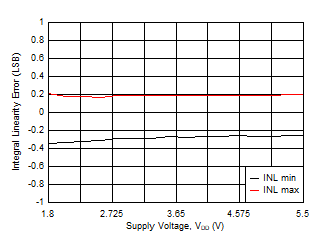
| Reference = VDD |
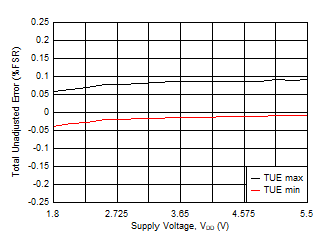
| Reference = VDD |
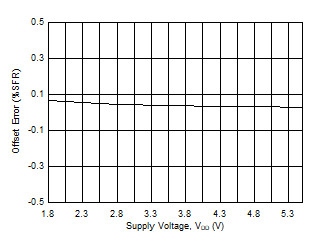
| Reference = VDD |
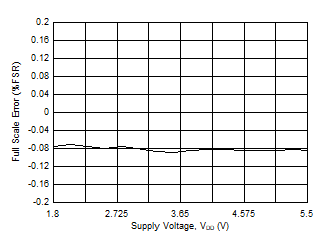
| Reference = VDD |
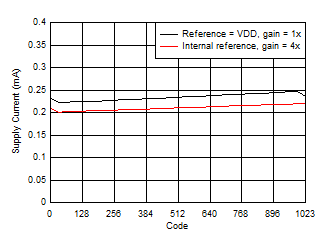
| VDD = 5.5 V |

| Internal reference (gain = 4x), DAC at midscale |
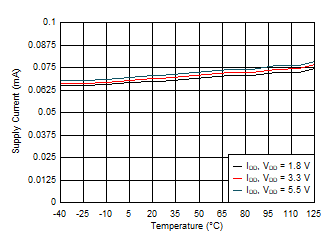
| Reference = VDD, DAC powered down |
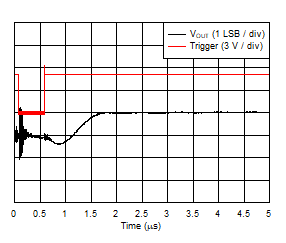
| Reference = VDD = 5.5 V, DAC code transition from midscale to midscale + 1 LSB, DAC load = 5kΩ || 200pF |
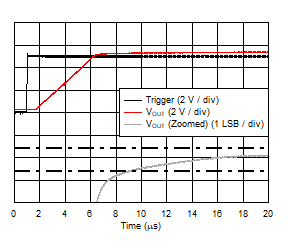
| Reference = VDD = 5.5 V, DAC load = 5kΩ || 200pF |
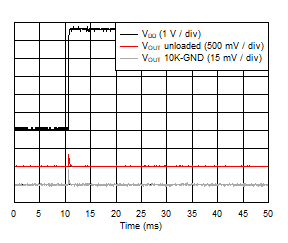
| Reference = VDD = 5.5 V |
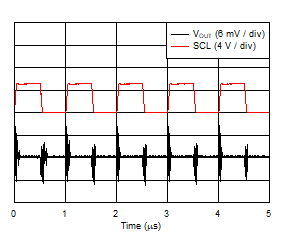
| Reference = VDD = 5.5 V, Fast+ mode, DAC at midscale, DAC load = 5kΩ || 200pF |
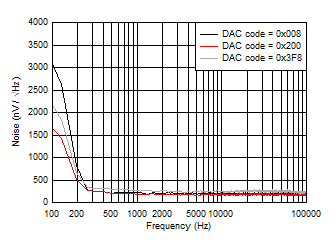
| Reference = VDD = 5.5 V |
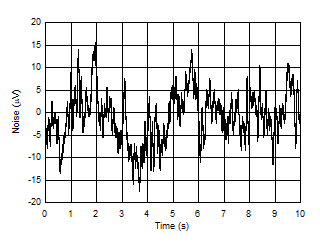
| Reference = VDD = 5.5 V, DAC at midscale |
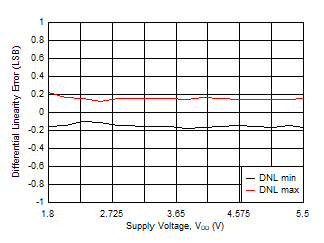
| Reference = VDD |
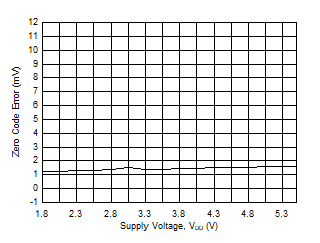
| Reference = VDD |
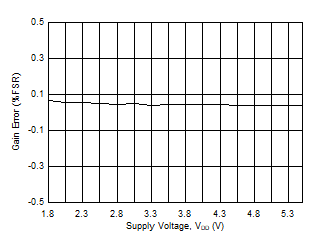
| Reference = VDD |
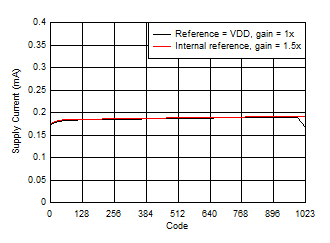
| VDD = 1.8 V |
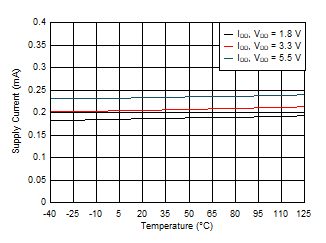
| Reference = VDD, DAC at midscale |
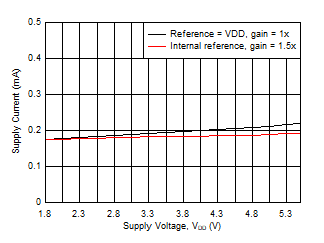
| DAC at midscale |
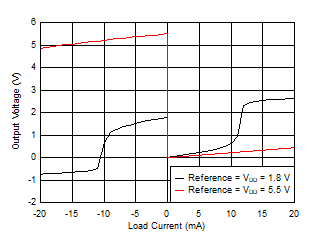
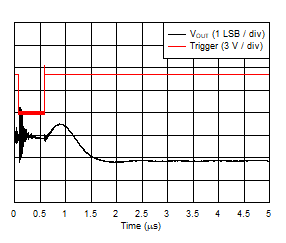
| Reference = VDD = 5.5 V, DAC code transition from midscale to midscale – 1 LSB, DAC load = 5kΩ || 200pF |
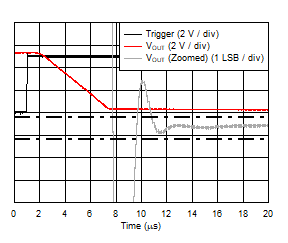
| Reference = VDD = 5.5 V, DAC load = 5kΩ || 200pF |
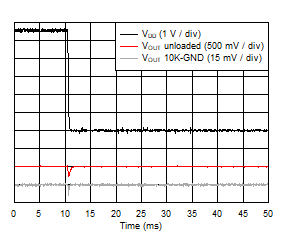
| Reference = VDD = 5.5 V |
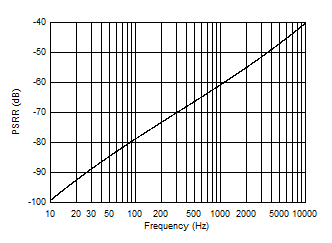
| Internal reference (gain = 4x), VDD = 5.25 V + 0.25 VPP, DAC at midscale, DAC load = 5kΩ || 200pF |
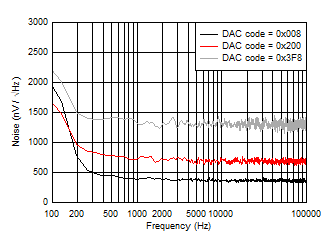
| Internal reference (gain = 4x), VDD = 5.5 V |
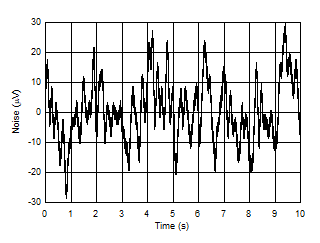
| Internal reference (gain = 4x), VDD = 5.5 V, DAC at midscale |